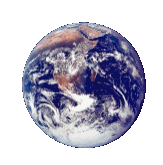|
| September 22, 2015 |
| |
The Case for Anthropogenic Warming I,
Richard McGehee, School of Mathematics |
| |
|
The scientific evidence for global warming and for the impact of
human activity on the climate will be presented and discussed. |
| |
|
| September 29, 2015 |
| |
The Case for Anthropogenic Warming II,
Richard McGehee, School of Mathematics |
| |
|
The scientific evidence for global warming and for the impact of
human activity on the climate will be presented and discussed. |
| |
|
| October 6, 2015 |
| |
The Earth's Energy Imbalance,
Richard McGehee, School of Mathematics |
| |
|
By some estimates, the current energy imbalance for the surface of the Earth could be as high as one Watt per square meter. We will discuss some implications for the future if this imbalance is sustained. |
| |
|
| October 13, 2015 |
| |
An Introduction to Ocean Box Models,
Juliann Leifeld, School of Mathematics |
| |
|
| October 20, 2015 |
| |
Welander's Ocean Box Model as a Nonsmooth System,
Julian Leifeld, School of Mathematics |
| |
|
| October 27, 2015 |
| |
Quantifying resilience of ocean circulation in simple box models I,
Kate Meyer, School of Mathematics |
| |
download slides |
| November 3, 2015 |
| |
Quantifying resilience of ocean circulation in simple box models II,
Kate Meyer, School of Mathematics |
| |
|
| November 24, 2015 |
| |
Homoclinic Bifurcation in Welander's Model,
Julie Leifeld, School of Mathematics |
| |
|
| December 1, 2015 |
| |
Models of species' climate niche: an example of classification algorithms,
Jessica Hellmann, Institute on the Environment |
| |
|
For purposes of basic knowledge and conservation planning, ecologists seek to characterize the climatic conditions that limit where species live on Earth. To do this, they build statistical models that describe the climatic niche of individual species based on its geographic occupancy. These models, e.g., MaxEnt, are classification algorithms that aim to distinguish occupied from non-occupied points from a set of climatic descriptors. With a description of a species' ecological niche, it is possible to project these conditions forward in time according to global circulation model output and identify locations that might be suitable for the focal species in the future. We will discuss some examples of how these models are used, criticisms that ecologists have leveled at these models, and one particular dilemma having to do with local adaptation of populations within a species' range. |
| |
|
| December 8, 2015 |
| |
Using multiple time-scales to understand Dansgaard-Oeschger events,
Andrew Roberts, Cornell University |
| |
|
|
